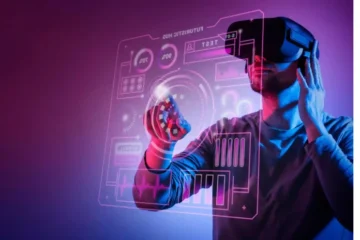How Media Defines Masculinity
The portrayal of masculinity in media—spanning films, television shows, and advertisements—plays a crucial role in shaping societal perceptions and expectations. Historically, male characters have been depicted as heroes, warriors, or providers, reinforcing narrow definitions of masculinity that are often centered on stoicism or aggression. For instance, the iconic cowboy of classic westerns, showcasing rugged individualism and overt toughness, is a far cry from the emotionally vulnerable characters featured in contemporary dramas. Over the decades, media has reflected and, at times, challenged these archetypes, adapting to evolving cultural landscapes. By examining historical male stereotypes, one can see how certain traits have been elevated as cinematic ideals, affecting personal identity and cultural norms. It’s evident in toxic masculinity news.
The Impact of Stereotypes on Society
The continuous reinforcement of stereotypical masculinity can significantly shape societal beliefs, norms, and individual behaviors. These media-driven stereotypes create a pervasive framework that influences how both men and women view masculine roles and behaviors, often fostering a limited perspective of gender identity. For example, traits such as dominance, emotional suppression, and physical prowess are frequently glorified, leading to societal expectations for men to embody these characteristics. Such depictions can result in harmful pressures, where deviation from the stereotype is viewed as a failure of masculinity. Studies within the field of psychology demonstrate how these exaggerated portrayals contribute to solidifying unhealthy social norms and perpetuating gender biases.
Risks Associated with Stereotypical Masculine Representations
Stereotypes of masculinity, particularly those that prioritize aggression, dominance, and emotional restraint, often translate into societal risks such as aggression and emotional suppression. Such qualities are frequently discussed in media outlets as aspects of toxic masculinity news. The pervasive display of these traits in media content can foster environments where emotional expression is dismissed or stigmatized. This can lead to mental health challenges, where individuals struggle to express vulnerability or seek help when needed. Moreover, these portrayals often reinforce a cycle of toxic behavior, where aggression and tough exterior attitudes become normalized within interpersonal relationships.
Responsibility in the Age of Diverse Media Platforms
In today’s digital world, where media consumption is at its peak, content creators possess both a power and a responsibility to represent diverse masculinities. This age of diverse platforms provides opportunities to move beyond traditional portrayals and embrace a multiplicity of male experiences. By showcasing stories that depict authenticity and an array of emotions, creators can redefine masculinity for current and future generations. Case studies from streaming platforms reveal that audiences appreciate narratives that break away from conventional tropes, indicating a societal shift toward acceptance of wider gender identities. These actions demonstrate the media’s capacity to inform cultural conversations and potentially alter societal expectations regarding gender and masculinity.
Promoting Alternative Masculinities in Media
In recent years, there’s been a concerted effort to portray alternative, more inclusive representations of masculinity. Progressive film projects and television series have depicted male characters that embrace vulnerability and emotional complexity. Campaigns that challenge obsolete gender norms encourage audiences to rethink familiar narratives, offering men the opportunity to see themselves more fully represented. Such initiatives promote a broader understanding of masculinity that transcends outdated stereotypes, inspiring viewers to embrace diverse facets of male identity.
Real-World Examples of Progressive Media
Numerous films and television series have successfully expanded the narrative around masculinity, providing refreshing perspectives that resonate with contemporary audiences. For example, many independent films prioritize character depth over traditional hero attributes, exploring themes such as compassion, emotional clarity, and interpersonal connectivity. These projects are often driven by creators keen on reflecting the diversity inherent in the human experience. The shift towards a more multifaceted portrayal of masculinity brings about a cultural resonance, fostering dialogue and encouraging empathy among diverse viewership.
Educational Approaches to Media Literacy
Educational programs focusing on media literacy are becoming increasingly vital in helping audiences navigate and critically engage with media content. By developing analytical skills, individuals—especially younger audiences—can learn to deconstruct media portrayals and understand the underlying messages about masculinity and gender roles. Workshops and courses that highlight media literacy encourage critical thinking and inspire audiences to question the narratives that shape their perceptions. This proactive approach ensures that new generations are better equipped to interpret media content critically and independently.
The Future of Masculinity Portrayals in Media
The future of masculinity in media is set on a hopeful path, driven by changing trends and an increasing demand for authenticity and representation. Digital platforms and social media allow for a broader spectrum of stories and voices, supporting narratives that genuinely reflect the diversity of human experiences. As technological advancements continue and societal attitudes evolve, media has the potential to bring about transformative changes in how masculinity is perceived and depicted. The ongoing shift towards authenticity and diversity represents a profound opportunity for media to redefine gender narratives, making space for inclusive portrayals that inspire and reflect the complexity of modern masculinity.
Conclusion
In conclusion, the media plays a pivotal role in shaping societal attitudes toward masculinity, influencing not only perceptions but also behaviors across various demographics. As traditional portrayals of masculinity often emphasize narrow traits such as aggression and stoicism, the consequences can lead to harmful stereotypes that pressure individuals to conform to rigid standards. However, the evolving landscape of media now offers a promising opportunity to challenge these norms. By embracing diverse and nuanced representations of masculinity, creators can foster a healthier cultural dialogue, moving towards a more inclusive understanding of male identity that values vulnerability and emotional expression.
Keep an eye for more latest news & updates on Hint Insider!




